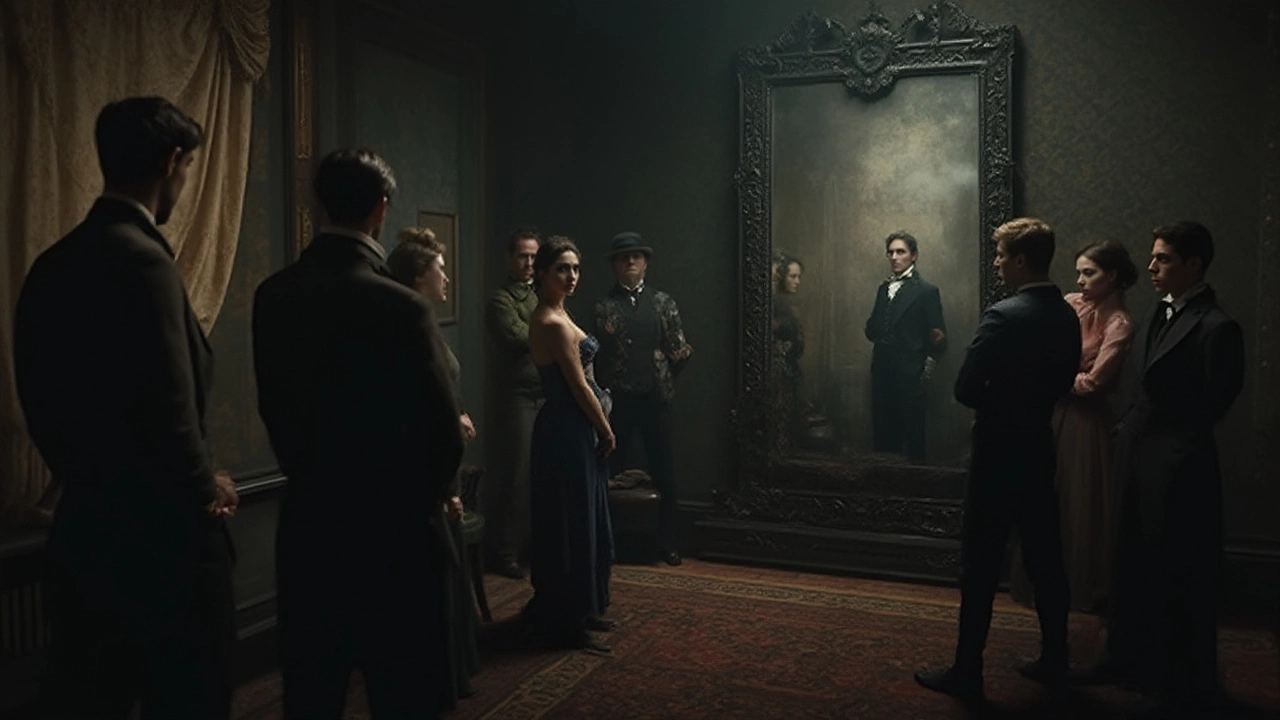Black Mirror: What It Is, Types, Prices and Buying Tips
If you’ve seen a sleek, dark glass panel in a modern loft or a TV series and wondered what’s behind that deep shine, you’re looking at a black mirror. It’s basically regular glass with a special coating that absorbs light, giving it a dark, almost invisible look until you stand close enough to see your reflection. The effect can make a room look bigger, add a futuristic vibe, or hide a TV screen when it’s off.
Before you spend cash on a black mirror, know the basics: there are three main ways manufacturers create that dark finish – tinted glass, reflective film, and LED‑backed panels. Tinted glass is a single piece that’s dyed during production, so it’s sturdy and low‑maintenance. Reflective film is a thin sheet you can stick onto ordinary glass; it’s cheaper but can bubble over time. LED‑backed panels are the most high‑tech: they have built‑in lights that turn the glass into a screen when you want, and a mirror when you don’t.
Types of Mirrors and Why Black Matters
When you shop, you’ll meet a few terms. Flat black mirrors are the classic style – they’re just dark glass that reflects like any normal mirror, only with a moody tint. Concave black mirrors curve inward and are used in makeup stations or lighting tricks; they can make your face look slimmer. Convex black mirrors bow outward, useful for safety in hallways because they show a wider view.
Why choose black? The dark look hides fingerprints and smudges longer than a bright mirror. It also blends with dark walls, making the reflectivity subtle. In a home theater, a black mirror can hide a TV screen when it’s off, turning the wall into a sleek piece of art. For a bar or restaurant, it adds a chic, upscale feel without the glare of a traditional mirror.
How Much Should You Expect to Pay
Price ranges are wide. A small, 12‑inch tinted black mirror can cost as little as £20‑£30. Larger, custom‑cut pieces – say, a 4‑ft by 6‑ft wall panel – can run from £150 up to £600 depending on thickness and brand. Film‑applied mirrors are the cheapest route; you buy a roll of film for about £10‑£15 and apply it yourself, but you’ll need a steady hand. LED‑backed panels start around £300 for a 32‑inch size and climb quickly as you add features like Wi‑Fi control or higher resolution.
When budgeting, think about installation too. Heavy glass needs proper mounting hardware; a professional install can add £50‑£100. If you’re DIY‑savvy, you can use mirror clips and a level to hang it yourself, saving money but taking extra time.
Here’s a quick cheat sheet:
- Tinted glass: £30‑£200 per square metre, durable, low maintenance.
- Reflective film: £5‑£15 per square metre, cheap, may need replacement.
- LED‑backed panel: £250‑£800 per unit, high tech, extra wiring.
Don’t forget to check the warranty. Good manufacturers offer 2‑year coverage on coating defects, which can save you hassle if the dark finish starts peeling.
In short, a black mirror can be a stylish upgrade without breaking the bank, as long as you know what type you need, how much you’re willing to spend, and whether you’ll handle the install yourself. Pick the right size, match the finish to your room’s vibe, and you’ll end up with a sleek piece that works as both décor and functional mirror.
Why do black mirrors unsettle us? Discover the psychological, historical, and cultural reasons why these dark reflections provoke such strong reactions.
Jul, 19 2025
